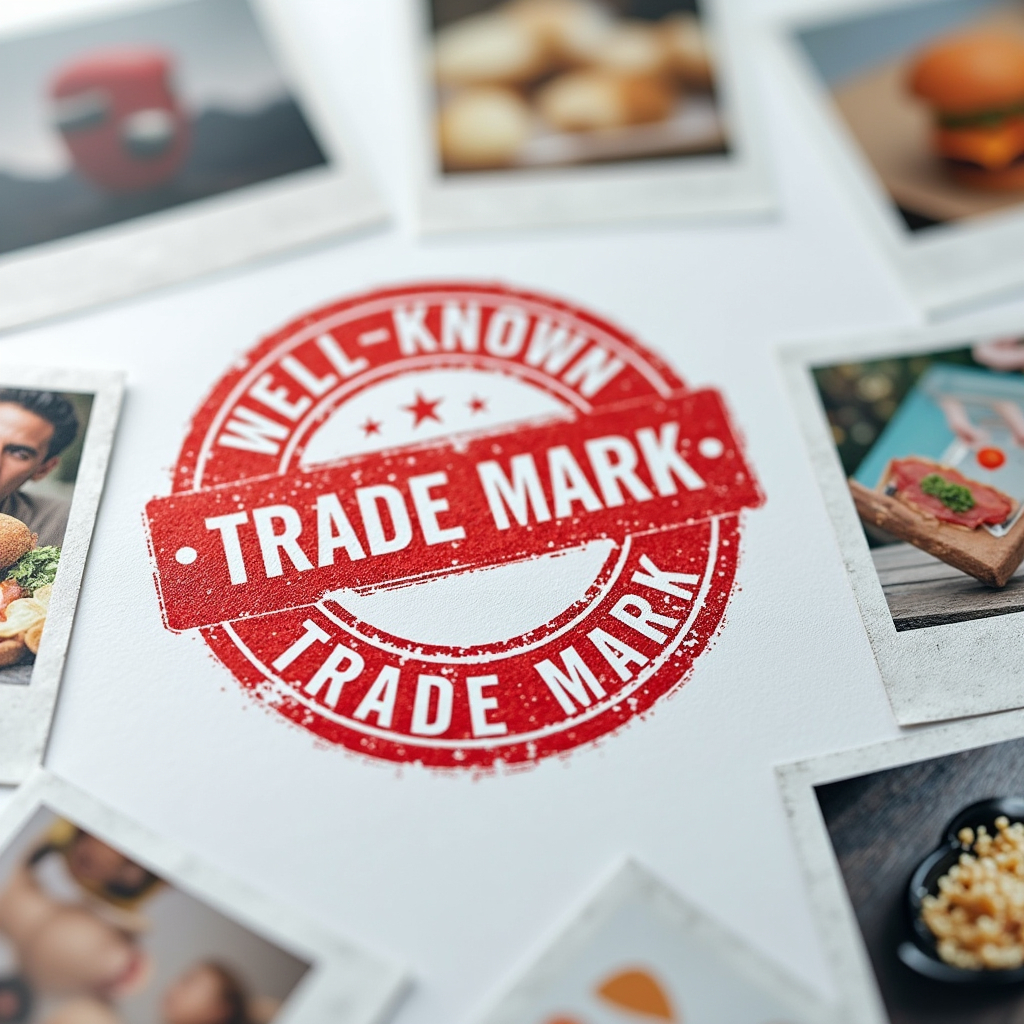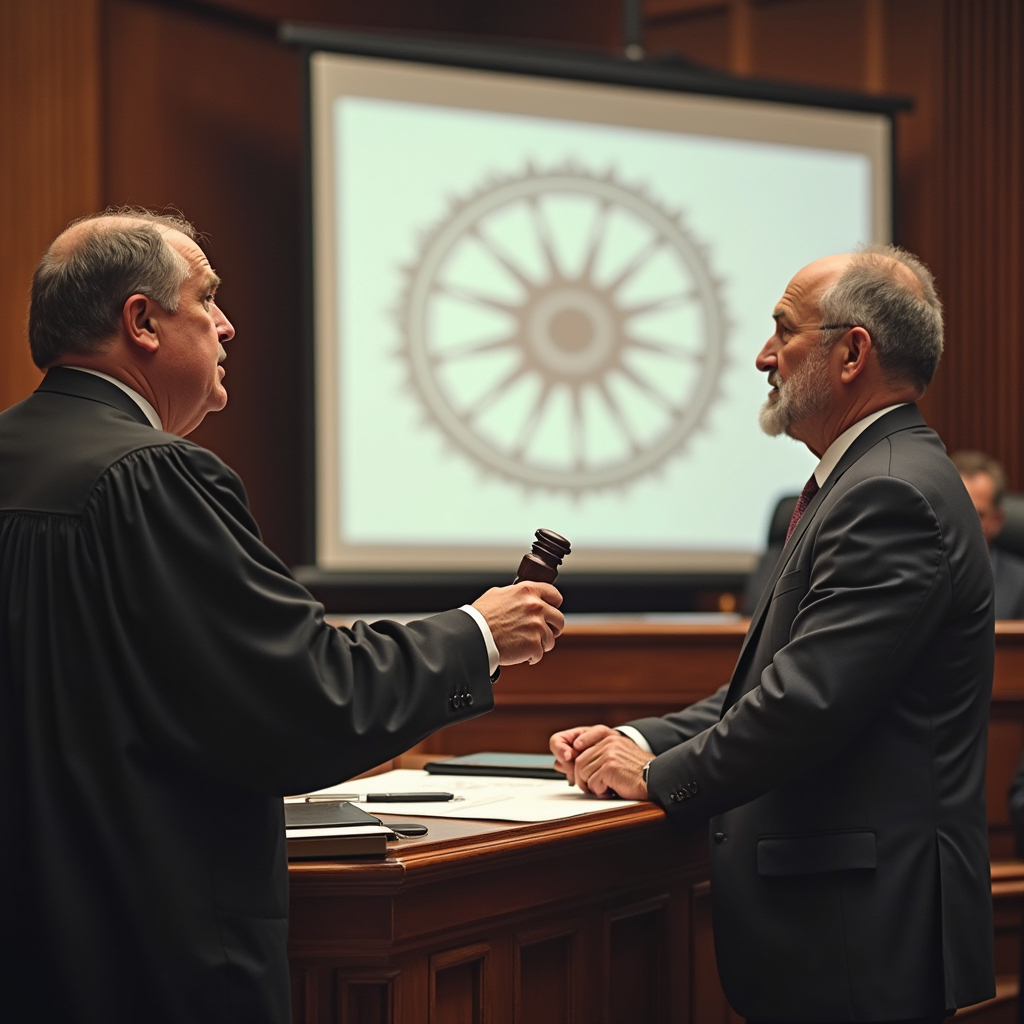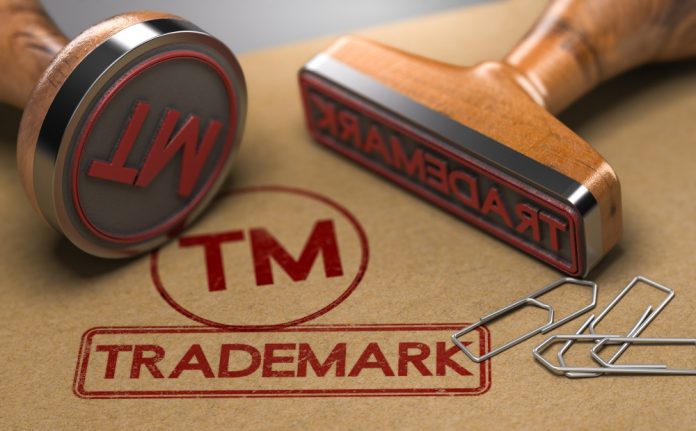This article is written by Sneha Arora. It covers the definitions and key concepts in Section 2 of the Trade Marks Act, 1999. This Section is crucial as it lays down the groundwork for understanding the provisions and regulations governing trade marks in India. This article includes definitions for terms such as trade mark, service mark, well-known trade marks, and collective mark, among others. It also defines in detail about types of trade marks, and essential definitions in detail.
Table of Contents
Introduction
What sets a brand apart from the other generic ones is its distinctiveness, specifically in its name and looks. This distinctiveness is often known as a trade mark. The “trade mark” serves as a determining factor for clarifying how to better understand the terms relating to it, which this article will cover in detail. Section 2 of the Trade Marks Act, 1999 provides definitions and interpretations crucial for understanding trade marks in India. It defines key terms such as “mark”, which includes devices, brand names and packaging thereby broadening the scope of what can be trademarked.
The Section emphasises the importance of distinguishing goods and services to prevent consumer confusion. This foundational framework supports the Act’s overall purpose of protecting trade mark rights and preventing infringement, aligning with international standards established by the Trade-Related Aspects of Intellectual Property Rights (TRIPS) Agreement, 1995.
Understanding Section 2 of the Trade Marks Act, 1999 is essential and vital for understanding the comprehensive legal framework and ensuring that trade mark rights are adequately protected under Indian law.
Clause-wise explanation of Section 2(1) of Trade Marks Act
Section 2(1) of the Trade Marks Act, 1999 delves into the cornerstone and intricacies of the specific terms and definitions that form a significant role in trade mark law in India. Each clause within Section 2(1) is carefully crafted to define the legal concepts essential for the enforcement and protection of trade marks.
This Section breaks down these definitions, offering a clear and detailed understanding of terms such as “trade mark”, “mark,” “service mark,” and “well-known trade mark,” among many others. Given below is a clause-wise explanation of Section 2(1), which aims to clarify the legal interpretations and implications of these terms.
Section 2(1)(b): Assignment
Under the Trade Marks Act, 1999, the term “assignment” is defined under Section 2(1)(b) as the transfer of ownership of a trade mark from one party to another i.e. the assignor to the assignee through a written statement or an agreement. This process allows the assignor to relinquish all rights and interests, granting the assignee full control and responsibility over the trade marks.
Assignment under the Trade Marks Act covers several types of assignment:
- Complete assignment: All rights are transferred to the assignee under the trade mark.
- Partial assignment: Rights are assigned only for specific goods and services.
- Assignment with goodwill: The trade mark is assigned along with the associated business goodwill, allowing broader use by the assignee.
- Assignment without goodwill: Rights are transferred without the associated goodwill, often restricting the assignee’s use to non-competing goods and services.
Section 2(1)(b) lays down the legal requirements which say that the assignment must be documented in writing. Both registered and unregistered trade marks can be assigned. Moreover, the assignment must comply with certain restrictions to prevent confusion or conflict in the marketplace, for example, providing multiple exclusive rights for similar goods and services to different parties.
Furthermore, the process so included under Section 2(b) of the Trade Marks Act, 1999, is that the assignor must provide and submit an application to the registrar of the trade marks using Form TM-P, along with necessary documentation. Further, the registrar reviews the application and, upon approval, updates the trade mark registrar to reflect the new ownership.
This structured approach of Section 2(1)(b) ensures that the trade marks rights are transferred legally and transparently, protecting the interests of both parties involved in the assignment. Furthermore, since the assignment details are in public records, the customers of the brand can also access and be aware of who is the current owner of the brand.
Illustration: Consider a hypothetical situation of two companies A and B who are involved in an agreement as illustrated below.
- Company A: A well-established manufacturing company of sports equipment owing the trade mark, “Sportmax”.
- Company B: A new startup that specialises in fitness apparel and wants to expand its brand by using the “Sportmax” trade mark.
Company A decides to assign its rights to company B, a startup specialising in fitness apparel. After negotiating the terms, the two companies draft a written assignment agreement specifying that company B will use the “Sportmax” trade mark for fitness apparel while company A retains rights for the sports equipment.
Following the execution of the agreement, company B files an application with the registrar of the trade mark to formalise the assignment agreement. Upon approval, the registered trade mark is updated, allowing company B to enhance its brand recognition with the “Sportmax” name. Thus, this is how B was partially assigned the “Sportmax” trade mark in a specific field. This process of trade mark assignment mechanism under the Trade Marks Act, 1999, enables strategic business growth while maintaining legal compliance.

Section 2(1)(c) : associated trade mark
Section 2(1)(c) defines “associated trade mark”, which refers to a set of trade marks that are registered under a single owner and linked in a way which shows that they are related to the same business. According to the trade mark law, associated trade marks are those that have common ownership, similar goods or services and registration but in India, the registration of associated trade marks is not compulsory.
The objective of this clause is to prevent the consumer from confusion and to protect the identity of the brand and simplify the enforcement of trade mark rights for the owner.
Illustration: Consider a hypothetical company “VishCare’’ which manufactures coffee and tea products, given below:
- “Vishcare Coffee’’ is the name of the registered trade mark for the coffee products.
- “Vishcare Tea” is the name of the registered trade mark for tea products.
Both are associated trade marks because:
- They are owned by the same company.
- They relate to similar goods (beverages).
- They share a common branding element “VishCare”.
Necessity of a mark to be registered as an associated mark
The definition of an associated trade mark is read with Section 16 of the Trade Marks Act, 1999 clearly shows that the aim of registration of the associated mark is to prevent confusion or deception among the public and trade where the goods or services come from.
The registration of the associated trade mark is necessary only when it misleads the public in regard to the origin of goods or services. The registration of associated trade marks not only helps the Trade Mark Registry to maintain accurate records of trade marks but it also benefits the owner of an associated trade mark owner under the trade mark law.
For example, under Section 55 of the Trade Marks Act, 1999, the use of one associated or substantially identical trade mark is considered equivalent to the use of another. Now if the proprietor needs to prove the use of a registered trade mark, the registrar or the high court can accept the use of one associated trade mark as proof of all associated trade marks.
However, it depends upon the discretion of the registrar or the high court. There is an additional benefit that the registry usually accepts the new registration if it is associated with the registered trade mark.
Disclaimer (terms and conditions) of each associated trade mark
The Bombay High Court in the case of Pidilite Industries Limited vs. Poma-Ex Products and Ors (2017) stated that the disclaimer of one registration does not apply to others even if they are associated trade marks. Each registration in the trade mark is reflected independently of each other. Thus, disclaimers in one registration do not automatically extend to others.
Section 2(1)(e) : certification trade mark
Section 2(1)(e) defines “certification trade mark” as a special kind of mark (logo/symbol) that shows the quality and standard of goods or services to customers specified by the owner of the goods or services.
It helps to distinguish the certified and uncertified products and shows the specific standard of goods or services of the trade mark owner. The basic purpose of the certification mark is that these marks ensure that products are safe and meet agreed-upon standards, protecting rights of the consumers.
Certification of trade marks helps the consumers know about the origin, material, mode of manufacture or performance of service of goods or services that are set out by the owner under the certification trade mark. For example, the seal of organic food products that seal certifies that the food product meets the organic farming standard.
Illustration: Imagine there are two brands of Shilajit, which is a natural mineral-rich substance found in the Himalayas, known for its rejuvenating and health-boosting properties.
- Brands A has trade mark certification that says “Pure Himalayan Shilajit”. This means Shilajit originates from the Himalayan region and meets specific standards.
- Brand B has a regular label that says “Shilajit” but does not show any certification.
Now, it can be seen that the certification of mark easily helps consumers to distinguish between the certified shilajit and regular label shilajit, based on which they can buy the product knowing its quality.

Significance of a certification mark
A certification mark is a special label that shows a product meets the standards set by the certified bodies. These organisations evaluate the origin, quality, materials, and other characteristics of goods and services to ensure compliance with specific criteria. Because certification marks represent national regulations, companies cannot own them. They signify agreements between manufacturers and testing agencies.
In contrast, a trade mark is a name, phrase, symbol or design that identifies a specific company as the owner of a product. trade mark’s protects against unauthorised use and helps maintain a company’s reputation. They safeguard your brand and products, preventing competitors from misusing your logo or name, thus protecting your business assets.
The certification marks signify that a product or service has been thoroughly tested for quality, materials and origin. Certification bodies verify that a product meets certain standards and authorises businesses to use these certification marks. This indicates a partnership between international testing agencies and producers, ensuring that producers from different countries are safe and of high quality.
A product bears a certification mark if it meets the standards established by a certification centre, which is approved by a government organisation. There are various types of certification marks that can indicate aspects such as the origin and manufacturing process of a product.
For instance, a mark might indicate if a product is made from recycled materials. Although there are no strict regulations regarding these marks, many products feature the word “certified” on their packaging.
Types of certification marks in India
- Statutory mark: These marks have to meet certain standards as per the law and ensure compliance with certain regulations. For example:
- Indian Standard Institution (ISI) mark: Marks that certify that the product meets the Indian standard for quality, safety and performance. It includes a wide range of products such as food items, industrial products etc.
- Agmark (Agriculture Mark): This mark certifies the quality of agricultural products like spices, vegetables, fruits, etc.
- Food Product Order (FPO) mark: This mark certifies that fruit products like jams, juices and pickles meet the quality and safety standards.
- Hallmark: This mark certifies the purity of gold jewellery.
- Ecomark: This mark certifies that the goods are eco-friendly in nature.
- Non-statutory mark: These marks are encouraged to be added but not mandatory under the law. For example:
- Silk mark: this certified mark is given to the Central Silk Board to ensure the quality and purity of Silk products.
- Ayush mark: This certified mark is given by the Ministry of Ayush to ensure the quality and authenticity of Ayurvedic products.
- Foreign certification mark: Foreign certification mark ensures products meet certain standards, quality, safety and environmental sustainability, facilitating international trade and consumer trust. They include:
- China Compulsory Certificate (CCC) mark: These marks are Chinese certification for product safety and quality.
- International Organisation for Standardization (ISO): This mark is a global certification for products meeting international standards for quality, safety and performance.
Process of obtaining certification marks
Securing a certification mark for your products or services may seem challenging, but it is essential for ensuring quality and compliance. Here’s a simplified overview of the process:
Apply online
The applicant needs to file Form TM-A with the prescribed fees to the Indian trade marks registry in class(es) of goods and services they are seeking the certification mark for. Its registration process is quite akin to that of a normal trade mark.
Registration process
- Classes of products: Certification marks must be registered for the specific classes of goods or services they certify.
- Statement of case: Your application must include a statement of case explaining why you qualify to apply.
- Draft regulations: You need to provide draft regulations detailing how you will manage the certification process and oversee the use of the mark. These regulations must mandatorily include the following:
- Basic details of the applicant, such as their name, address, contact details, etc.
- Nature of business owned by the applicant and its financial structure (like royalty rate, licensing fees, etc).
- Documents proving the applicant’s competency for certification of the goods and services they are seeking certification mark for.
- Undertaking signed by the applicant stating that the certification would only be given based on merit and no party would be discriminated against if they meet the required standards of certification.
- Characteristics and logo of the mark, especially if there are different types or styles of the same mark to signify the level of requirements met of the certified standards.
- Document detailing the manner of monitoring the use of the certification mark in India and globally.
- Document detailing the structure for dispute resolution.
- Any other documents the Registrar may deem necessary.
Application review

The Indian trade mark registry will review your application to ensure it meets all the requirements, including the ability to distinguish certified goods from uncertified ones. If everything checks out, the application will be published in the trade marks journal.
There is a four-month period during which the other parties can object to the filed application and the trade mark. If there are no objections, or if any objections are resolved in your favour, your certification mark will be registered. Furthermore, since this is a certification mark, the Registrar would also consider additional points such as:
- Competency of the applicant to certify the class of goods and services he is applying for.
- Advantage of any such certification mark if granted registration, and whether it is needed or not.
- Whether the drafting regulations filed by the applicant are in order and plausible (especially in case of how it will be monitored and the structure for dispute resolution).
Duration and revocation
A certification mark can be registered up to a validity of ten years just like any other type of trade mark. However, it can be revoked if:
- The owner is no longer qualified to certify the goods or services.
- The owner fails to meet regulatory requirements.
- It’s determined that keeping the mark registered is against the public interest or not needed anymore.
Section 2(1)(g) : collective mark
Section 2(1)(g) defines a collective mark as a symbol, design, or unique sign used by members of an association to show their goods or services that come from the group or association as a whole, rather than from an individual.
It is a special type of trade mark that helps customers to identify goods or services from a group of people who are part of an association of persons. However, partnership within the meaning of the Indian Partnership Act, 1932 is an exception to the term ‘association of persons’. Collective marks are dealt with under Sections 61 to 68 of the Trade Marks Act, 1999.
India is a key member of the Paris Convention for the Protection of Industrial Property, 1883 and as per Article 7bis of the Paris Convention for the protection of industrial property requires member countries to recognise and protect the collective marks owned by the associations. In simpler terms, the countries that are part of the Paris Convention must recognise and safeguard the trade marks that represent the groups of businesses that are working together.
The purpose of collective marks is to inform the public about the association and the specific goods and services they provide that are associated with the mark. Some examples of collective marks are given as follows:
- 100% Recycled Paperboard: A registered collective trade mark of the Recycled Paperboard Alliance, Inc.
- Chartered Accountant (CA): This collective trade mark is used by the members who are part of the Institute of chartered accountants.
- CPA: It denotes the members of the certified public accountants.
Condition to register a collective mark
Sections 62 and 63 of the Trade Marks Act deal with condition registration of collective marks.
As per Section 62 of the Trade Marks Act 1999 the collective mark cannot be registered if it might confuse people or mislead them into thinking it is something else. If there is a chance that the public might not recognize it as a collective mark, the registrar may ask for the mark to include a clear indication that it is necessary for the collective mark. This assured the consumers what the mark represents and who is using it.
As per Section 63 of the Trade Marks Act, 1999 when applying to registration of collective marks the applicant must comply with all the regulations that outlined how the mark can be used. These regulations should specify who is allowed to use the mark, the membership condition of the association, and rules for using the mark, including penalties for misuse.
Mandate for registration of collective trade mark
As per the mandate provided in Rule 25(7)(a) of the Trade Marks Rules, 2002, it requires that any application to register a collective trade mark must use Form TM-3.
Under Rule 128(1) of the Trade Mark Rules, 2002, when applying for a collective mark for goods or services under Section 63(1) of the Trade Marks Act, 1999, you must submit the application to the Registrar using Form TM-3, Form TM-4, or, for a single application, Form TM-66 or Form TM-67. This application must be submitted in triplicate format, inclusive of five extra copies of collective marks.
The draft regulations that come with the application also need to be in the triplicate format along with Form TM-49. The guidelines for accepting trade mark applications will be updated to include the requirement for authorization to proceed with the application.
Section 2(1)(h) : deceptively similar
Section 2(1)(h) of the Trade Marks Act, 1999, defines “deceptively similar” as a “mark shall be deemed to be deceptively similar to another mark if it so nearly resembles that other mark as to be likely to deceive or cause confusion.”

It refers to the legal standard used to assess whether two marks are so similar that they could potentially confuse consumers into mistaking one for the another. Deceptively similar products cannot be registered under the Trade Mark Act, 1999. Ultimately it helps to protect the brand identity and consumer interest.
This deceptively similarity can lead to misidentification of the original mark and it also harms the business of an owner. Deceptively similar marks can confuse and mislead consumers into believing that they are purchasing products from different companies, potentially leading to loss of trust and loyalty.
The phrase “likelihood to deceive or cause confusion” indicates whether the average consumer would be likely to mistake one mark for the other, which can happen due to structurally, visually, and phonetically similar between the marks which creates likelihood to deceive or cause confusion among the consumers.
Important key factors to accessing deceptively similarity
- Visual similarity: It specifies how closely the trade marks resemble each other in terms of design, colour, logo or packaging.
- Phonetic similarity: It determines the extent to which the marks sound similar when spoken, leading to potential confusion for the consumers.
- Structural similarity: The similarity in the arrangement of letters, words or syllables in the mark.
- Nature and kind of mark: The inherent characteristics of the mark, such as whether it is distinctive, descriptive or generic.
- Degree of likeness: It specifies the overall impressions of the mark, determining how they resemble each other in various aspects.
- Class of goods: The category or industry of the products or services under the mark, affecting the likelihood of the good if there is a confusion
Section 2(1)(i) : false trade description
Under Section 2(1)(i) of the Trade Marks Act, 1999, a “false trade mark description” is defined as any description, statement, or indication that is untrue or misleading with respect to the goods or services associated with which it is applied.
This encompasses the aspects of the goods and services to which it is applied. And includes the origin, nature, quality and manufacturing processes. In order for this Section to be valid the constituent elements to be followed are:
- Untrue or misleading trade description;
- There must be materiality in the trade description;
- The scope of the definition must cover the nature and quality of goods, origin and manufacturing process, quantity and size, fitness for purpose and any other characteristic so essential to be included.
According to Section 2(1)(i) of the Trade Marks Acts, 1999, a false trade description refers to:
- A trade description which is untrue or misleading in a material respect as regards the goods or services to which it is applied.
- Any description, statement, or other indication, direct or indirect:
- As to the nature, quantity, quality, number, gauge, size, length, width, purity, grade, size, area, composition, the content of dye, thickness, volume, weight, capacity, strength, sun fibre or raw material constituent, identity, origin, finished goods, fitness for purpose, age, genuineness, evaluation, duration, method of manufacture, processing or reconditioning, production, or material of which the goods consists, or the place of production, manufacture, processing, or reconditioning of any goods.
- The expression “false trade description” when used with reference to:
- The application of a false trade description of goods and services which includes the application of a false description as to the number of registered designs.
- The goods and services having applies to any figure thereto, which though not a trade mark or mark, is likely to lead persons to believe that the goods or services are the manufacture of the other person.
This definition aims to prevent manufacturers, retailers, or service providers from misleading customers about the nature, quality or origin of the products or services they sell. The Act also prescribes penalties for applying false trade descriptions, ranging from imprisonment to fines, so as to ensure fairness and transparency in trade mark practices.
For example, if a company sells a skincare product labelled as “made in France”, while it was actually manufactured in India. This misrepresentation about the origin of the product can mislead consumers regarding its quality and exclusivity.
Section 2(1)(j) : goods
Section 2(1)(j) of the Trade Marks Act,1999 defines, “goods” as any goods, products or services that or which can be traded or sold. This definition holds significance for understanding the scope of trade mark protection in India and ensuring clarity in conceptual understanding, since it delineates what can be protected under the Act.
The term “goods” encompasses a wide range of items that can be the subject matter of the trade, which includes:
- Material goods: Tangible items such as electronics, automobiles, clothing and food products.
- Services: Intangible offerings include services like consulting, cleaning and educational services.
The Act ensures that it includes the goods and services and does not limit the categories and services. Thereby, allowing for broader interpretation that includes any items that can be marketed or sold.

In the case of Cadbury India Limited and Ors. vs. Neeraj Food Products (2007), the Delhi High Court recognised that the trade mark “GEMS” is as similar to “GEMS BOND” and restrained Neeraj Foods from using a similar packaging since it could mislead consumers. The two trade marks were similar on the following basis:
- Phonetic and visual similarity
- Similarity in packaging and presentation
- The trade mark “GEMS” was a distinctive mark along with a good recognition.
- GEMS had gained the household name in India, establishing strong brand recognition and goodwill.
This case highlighted the significance of protecting the goods, branding and packaging under trade mark law reinforcing that goods include both the product and its quality, and presentation in the market. This decision reinforces the protection of both the distinctiveness and the packaging under trade mark law.
Therefore, the definition of goods in this Section is comprehensive, covering both tangible products and intangible services. This broad interpretation highlights the significance for business purposes seeking to protect their trade marks and brand identity in a competitive marketplace.
Section 2(1)(l) : limitations
Section 2(1)(l) of the Trade Marks Act, 1999, defines “limitations” as any restriction on the exclusive rights granted to a trade mark owner. This includes limitations regarding the mode of the use of the trade mark both within India and internationally.
This Section holds significance as it creates barriers over the rights of trade mark owners while protecting the interests of other businesses and consumers. They help prevent conflicts between trade marks and ensure that the registration of a trade mark does not infringe upon existing rights or mislead consumers.
As per Section 28, when a trade mark is registered, the owner gets exclusive rights to use it for their specific goods or services and the trade mark owner has the right to stop others from using deceptively or confusingly similar marks for those goods or services. However, there are some exceptions:
- If there are conditions or limitations on the registration, the owner’s rights are subjected to those restrictions.
- If multiple people have registered similar trade marks, they don’t automatically get exclusive rights against each other. Instead, they have the same rights as if they were the sole owner, but only against people who aren’t registered users.
A trade mark might be registered with restrictions on how it can be used. For instance, a company may register a trade mark for a specific colour, theme or design. Therefore, limitation under Section 2(1)(l) is crucial for ensuring that trade mark rights are exercised fairly and do not infringe upon the rights of others. They help maintain order in the marketplace protecting both consumers and businesses from confusion and unfair competition.
Section 2(1)(m) : mark
Section 2(1)(m) of the Trade Marks Act, 1999, defines a “mark” as a device, or brand. Heading, label, ticket, name, signature, word, letter, numeral, shape of goods, packaging, or combination of colours, or any combination thereof.
This definition is broad and inclusive, allowing various forms of identifiers to qualify as trade marks. There are several components of the trade mark which are briefly discussed as follows.
- Device mark: This refers to a geographical representation or symbol associated with a brand, such as a logo.
- Brand: The brand name distinguishes the product or service from the others in the market.
- Heading and label: These are often used in packaging and advertising to identify the source of goods.
- Ticket: This can refer to promotional materials that identify a brand or product.
- Word, letter and numeral: Any combination of these can serve as a trade mark as long as they distinguish the goods and services.
- Name and signature: Personal names or signatures can be trademarked if they can help identify the source of goods and services.
- Shape of goods: If the physical attributes like the shape of the product or goods are distinctive, it can be trademarked.
- Combination of colours: Specific colour combinations that are distinctive to a brand can be trademarked.
- Packaging: The design and appearance of the product can also be qualified as a trade mark.
The definition of mark holds significance because it establishes the foundation for what can be protected under trade mark law, by allowing the wide range of identifiers to qualify as marks. Furthermore, this act provides businesses the opportunities to protect their branding efforts, thereby preventing consumer confusion and safeguarding the brand reputation.

Section 2(1)(o) : name
Section 2(1)(o) defines the term “name”, which includes any abbreviation of a name. This means a name can refer to its full form, a shortened version, or an abbreviation, and also encompasses personal names that may be used as a trademark. The following are a few examples:
- “IBM” is an abbreviation of the name “International Business Machines”.
- “HP” is an abbreviation of the name “Hewlett-Packard”, the well-known brand for computers and laptops.
The scope of the name is divided into three names:
- Personal names: This includes the names of individuals, which can be trademarked if they are used in a commercial context. For instance, a celebrity might take a trade mark of their name to protect merchandise or services associated with their brand. Taylor Swift, Kim Kardashian, Beyonce, Amitabh Bachan and many more can be given as an example for this.
- Business names: The names of companies or organisations can also be trademarked. For example, “Apple” is a trademarked name for the technology company known for its electronics.
- Fictional names: Names created for fictional characters or brands can also qualify. For instance, “Winnie the Pooh” is a trademarked name associated with a character in children’s literature.
Therefore, this provision is vital for brand protection, consumer clarity, and legal recourse against infringement, thereby, playing a critical role in the trade mark framework in India.
Section 2(1)(p) : notify
Section 2(1)(p) of the Trade Marks Act, 1999 refers to the publication of the mark in the Trade Mark Journal, which is published by the Registrar.
What is a Trade Mark Journal
The Trade Mark Journal is an official publication of the trade marks registry on a weekly basis. It contains information about new trade mark applications, renewals, etc. It served as public records ensuring transparency and allowing anyone to access information about trade marks.
Section 2(1)(q) : package
Section 2(1)(q) of the Trade Marks Act, 1999, defines “package” as the physical container or wrapping in which goods are sold or distributed. This definition is significant as it encompasses not just the physical aspect but also the branding and marketing elements associated with the goods.
The packaging includes the bottles, boxes, bags or any other type of container that holds the product. It also includes the visual elements, including the colours, logos and text that appear on the package, which are crucial for brand identification and consumer appeal.
For example, the Coca-Cola bottle holds a different shape, making it instantly recognisable and associated with the brand.
Therefore, effective packaging not only safeguards protection but also enhances brand recognition and consumer engagement, making it a crucial element in trade mark law.
Section 2(1)(r) : permitted use
Section 2(1)(r) of the Trade Marks Act, 1999, explains that while determining the use of the trade mark in relation to the registered trade mark, the term “permitted use” can be used by:
- A registered user of the trade mark must use it in connection with the associated goods and services he has registered his trade mark in. A requisite user must follow the adhere to the following:
- They must been relation to the course of trade.
- The trade mark must be primarily registered for the associated goods and services.
- They are to be registered in the name of the proprietor for those goods and services.
- The conditions for the limitations applied on the registration must be fully filled.
- A person other than the registered proprietor with regard to the goods and services:
- They must be in connection to the course of trade.
- The trade mark must remain registered for those goods and services only.
- They must be the consent of the registered proprietor in a written agreement.
- The conditions or limitations so complied with must be fully filled with regard to their use and trade mark registration.
Section 2(1)(s) : prescribed
Section 2(1)(s) of the Trade Marks Act, 1999 defines “prescribed” as referring to something that is specified by the provisions under the Act. The definition of this term is significant as it establishes a framework for the implementation and administration of the provisions of this Act.
The term “prescribed” indicates specific procedures, fees, forms and other requirements related to trade marks that are established through formal rules. It provides a structured approach to the administration of trade mark laws, ensuring that the process is transparent and predictable.

Section 2(1)(t) : register
Section 2(1)(t) of the Trade Marks Act, 1999, “register” denotes to the Register of trade marks as referred in Section 6(1), as per which the “register” is the official record maintained by the registrar of trade mark, which includes details of all the trade marks that have been registered under the Act. This register is a public record and is crucial for maintaining and establishing the rights of the trade mark owners.
This register contains information about each registered trade mark, including its representation, the name of the owner, and the description of the goods and services. It also records the date whenever the trade mark was registered, which is important for determining the duration of the trade mark so registered.
Furthermore, details regarding the renewal of the trade mark are included to track the ongoing validity of the trade mark. Therefore, this registrar serves as prima facie evidence of the validity of the trade mark. This means that it can be further used in legal proceedings to establish ownership and rights.
It provides transparency, thereby, allowing the public to access information about the registered trade marks, which helps prevent conflicts and infringement. The register also helps aid trade mark owners in enforcing their rights against unauthorised use or infringement, as it clearly delineates ownership.
Section 2(1)(u) : registered
Section 2(1)(u) of the Trade Marks Act, 1999, defines “registered” as a term that refers to a trade mark that has already been registered under the trade mark registry. This status indicates that the trade mark has undergone the necessary examination and has been granted legal protection in India.
It serves as an official record of all trade marks that have been registered under the Act. Registration confers exclusive rights of the trade mark owners, aligning them to use a trade mark in connection with the goods are services for which it is registered and to prevent others from using a similar mark that causes confusion.
Illustration: Suppose “ABC Inc.” registers its logo as a trade mark for its software products. Once registered, the logo is considered a registered trade mark, and ABC Inc. has exclusive rights to use it in connection with software products.
Section 2(1)(v) : recognised proprietor
Section 2(1)(v) of the Trade Marks Act, 1991, defines a registered proprietor as a person who is for the time being entered in the register as the owner of The trade mark, this designation is crucial for the establishment of the legal ownership and the rights so associated with the registered trade mark.
The registered proprietor has exclusive right to use The trade mark services for which it is registered. Being a registered proprietor, the register provides legal backing against infringement, allowing the owner to take legal action if the trade mark’s rights are violated. The registers of a public notice of the trade mark rights, help to prevent unauthorised use by the others.
Section 2(1)(w) : registered trade mark
Section 2(1)(w) of the Trade Marks Act, 1999, defines a “registered trade mark” as a trade mark that is officially recorded in the trade mark registry and remains in force. This designation indicates that the trade mark has been granted legal protection exclusive right under the Act. Registration provides a trade mark owner with legal records against authorised use or infringement, allowing them to take action in court.
Section 2(1)(x) : registered user
Section 2(1)(x) of the Trade Marks Act,1999, defines “registered user” as the person or an individual who is officially registered as such under Section 49 of the Act. Section 49 deals with the registration of registered users. This designation is significant as it establishes the rights of individuals or entities to use a registered trade mark under specific conditions set by the trade mark owner.
The concept of the registered user facilitates partnerships in collaborations between trade mark owners and other businesses, allowing for broader distribution marketing for products. By regulating who can use a trade mark, the act helps ensure that consumers are not misled about the source of goods and services. It further provides the structure for resolving disputes related to trade mark use, as the rights and responsibilities of the registered user are clearly defined.
For example, if a well-known beverage company registers the trade mark ”FreshDrink” and allows a local distributor to use the trade mark for selling its product, the distributor becomes a registered user. They can market “Fresh drink” products but must adhere to the terms set by the beverage company. Therefore, this provision supports the collaborative use of The trade mark while ensuring that the registered trade mark proprietor retains control over their brand identity.

Section 2(1)(y) : registrar
Section 2(1)(y) of the Trade Marks Act, 1999, defines, “registrar” as a registrar of trade marks referred to in Section 3 of the Act.
This designation is significant for the administration of the enforcement of trade mark law in India. The registrar is the official responsible for overseeing the registration of trade marks maintaining the trade mark registry, and ensuring compliance with the provisions of the Act.
The registrar follows the responsibility of involving and examining trade mark applications, deciding on the approval or denial or registration, handling oppositions to trade mark applications and maintaining the trade mark register. The registrar plays a vital role in implementing the rules and procedures established under the Trade Marks Act. Thereby, ensuring that the system operates smoothly and fairly.
Who appoints the registrar
As per Section 3 of the Trade Marks Act, the Central Government has the authority to appoint a registrar of trade marks, who shall be known as the controller-general of patents, designs and trade marks. This appointment is made through a notification in the official gazette.
Section 2(1)(z) : service
Section 2(1)(z) of the Trade Marks Act, 1999, defines “service” as any service provided to the public, including any services rendered by a person in the course of trade or business. This definition is crucial as it extends trade mark protection to services, not just goods, thereby recognising the importance of branding in service industries.
The term encompasses a wide range of services, including banking, communication, education, financing, insurance, chit funds, real estate, transport, storage, material treatment, processing, supply of electrical or other energy, boarding, lodging, entertainment, amusement, construction, repair, conveying of news or information and advertising;. Services must be rendered in a commercial context, meaning that they are provided with the intent of generating profit or business.
By including services in the definition, the Act allows service providers to register trade marks that identify their services, thereby, protecting their brand identity. This definition helps consumers distinguish between different service providers, reducing the confusion in the marketplace. It promotes fair competition by enabling service providers to protect their brand, encouraging Innovation and qualities in service delivery.
Section 2(1)(za) : trade description
Section 2(1)(za) of the Trade Marks Act, 1991, defines “trade description” as any statement, description or indication whether direct or indirect, regarding various aspects of goods or services, this includes information about quantity, measure, gauge, weight, quality, suitability and the origin of the goods or services.
This provision encompasses any description, statement or indication that relates to goods and services as given below:
- Direct or Indirect references: It includes both explicit and implied description of goods and services.
- Quantity or measure: It refers to the amount or size of the goods.
- Nature and quality: It describes the characteristics and quality of goods and services.
- Composition: This indicates the materials or ingredients used in the goods.
- Fitness for purpose: It specifies intended use of suitability of the goods and services.
- Mode or date of manufacture: This includes how and when the product was made, especially important for perishable goods.
- Place or country of origin: This states where the goods were made or originated.
- Other characteristics: It covers any additional identifying feature of the goods and services. May vary from class to class.
Therefore, this definition is vital for regulating how goods and services are represented in the market. It further ensures that the descriptions are accurate and informative. Thereby, protecting consumers and promoting fair competition among businesses.
Section 2(1)(zb) : trade mark

Section 2(1)(zb) of the Trade Marks Act, 1999, defines a “trade mark” as a mark capable of being represented graphically and which is capable of distinguishing the goods or services of one person from those of others and may include shape of goods, their packaging and combination of colours. The following is the breakdown of terms to understand the definition.
- The term “mark” encompasses devices, brands, letters, numerals, shapes, packaging, or any combination of these.
- Rule 2(1)(k) of Trade Mark Rules, 2002 specifies that “graphical representation” refers to showing a trade mark for goods and/or services in a paper form.
- A trade mark must be able to identify and differentiate the goods or services of one entity from those of others, indicating the source and quality associated with that mark.
- “Goods” means anything that can be traded or manufactured.
- Section 2(1)(p) defines a “package” as including a case, box, container, covering, folder, receptacle, vessel, casket, bottle, wrapper, label, band, ticket, reel, frame, capsule, cap, lid, stopper and cork.
- “Service” refers to any service provided to potential users, covering areas like business, finance, education, transport and more.
There are distinctions in how “trade mark” is defined in chapter XII (which addresses offences) compared to the rest of the Act. The chapter XII definition leaves out terms like “proposed to be used” and “permitted user” due to the nature of the offences involved.
The term “trade mark” in Section 134(1)(c) also includes “trade name” and “business name”. The definitions apply to both goods and services, meaning the information about trade marks also applies to service marks.
Essential requirements of a trade mark
The Act offers a broad definition of a trade mark. Simply put, a trade mark is a visual symbol that indicates a trade connection between goods or services and the person using the mark. To qualify as a trade mark, it must meet the following requirements:
- It must be a mark, such as a device, brand, label, name, or any combination of these.
- It must distinguish one person’s goods or services from those of others.
- It must be used or intended for use in relation to goods or services.
- The use must involve a printed or visual representation of the mark, either on the goods or in any related context.
- For services, it must be used in statements about the availability or performance of those services.
- The purpose of using the mark must be to indicate a trade connection between the goods or services and the person who has the right to use the mark, whether they are the owner or a permitted user. The identity of the user does not need to be disclosed.

Types of trade mark
There are a variety of different trade marks outlined under the Act that can be registered, thereby, highlighting the diverse ways in which brands can be represented. These types include not only traditional marks like names and logos but also more innovative forms of marks like shapes, colours and sounds. Given below are some of the types that can be commonly seen in the Indian market:
Product mark
This mark is significantly used for goods but not services. The product mark is used to identify the producer, provider, reputation and the origin of the product. Product marks can be classified under Class 1–34 in the Fourth Schedule in Trade Marks Rules, 2002.
Service mark
This mark is similar to that of the product mark but it is significantly used for services but not goods. Service marks can be classified under Class 35–45 in the fourth schedule in Trade Marks Rules, 2002.
Word mark
A word mark is a type of trade mark that consists solely of words, letters, numbers or a combination thereof, without any graphic design. Under the Trade Marks Act, 1999, a word mark can be registered to protect the textual representation of a brand, allowing the owner to secure exclusive rights to the wording itself.
Device mark
A device mark is a type of mark that focuses on the visual representation, such as a logo, symbol or design, which is used to identify and distinguish the goods and services of one entity from those of others. Under the Trade Marks Act, 1999, device marks can include various artistic elements, such as graphics, shapes, and colours, and may or may not incorporate texts.
Series trade mark
A series of trade marks refers to a group of trade marks which are similar to each other but differ only in minor, or not distinctive aspects that do not affect their identity. Certainly allowing single registration to cover multiple variations of a mark. Therefore, simplifying the Apart from these generally traditional trade marks, there are also some unconventional trade marks in the modern era as discussed below:
Colour trade mark
The term used in the definition of the Trade Marks Act, 1999, ‘combination of colours’ signifies the colour trade mark. The criteria to register a colour trade mark is that the colour mark must be unique, distinctive and must identify the product and its source. The colour trade mark must maintain its distinctiveness and must be unique in nature to be recognised as a trade mark.
Sound trade marks
To register a sound trade mark it must be in such a form that is distinctive and identifiable by the customers. As for the Trade Marks Manual, there are certain categories of sounds which are excluded from being registered, that is, nursery rhymes, popular music, notes music of simple pieces, chimes songs, and regional music.

Shape trade marks
As included in the definition of the Trade Marks Act, 1999, “shape of goods” grants protection to shake marks as well. However, this mark is restricted by Section 9(3) of the Trade Marks Act, 1999, which excludes registration of such trade marks which includes only shapes associated with technical results, results from the nature of the goods, and those shapes which are of substantial value to the good itself.
So, in order to register a shape trade mark it is essential that it must be in relation to the goods only and not in relation to the container of the goods. For example, the shape of a building (like the Taj Mahal Palace Hotel) or the shape of bottles (like the Coca-cola bottle shape).
Section 2(1)(zc) : transmission
Section 2(1)(zc) of the Trade Marks Act, 1999, defines “transmission” as the transfer of trade mark rights by operation of law, which includes the devolution of rights to the personal representative of the deceased person, as well as any other mode of transfer that is not classified as an assignment.
In other words, transmission refers to the automatic transfer of rights due to legal circumstances, such as inheritance or transfer of will. For instance, if a trade mark owner passes away, their right can devolve to their personal representative, as part of the estate.
Furthermore, transmission can occur through various legal means such as mergers, corporate restructuring, acquisitions or other obligations that do not involve a voluntary assignment of rights. Additionally, this provision is crucial as it ensures that trade mark rights are preserved even after the original owner’s death or due to legal changes, preventing the trade mark from becoming available for public use.
For example, if a trade mark owner “A”, passes away and leaves his business including The trade mark “GreenEarth” to his son “B”, as part of the estate. This transfer would occur by operation of law and not as a voluntary assignment.
Therefore, this definition under Section 2(zc) of the Trade Marks Act,1999, is crucial for maintaining the continuity of trade mark rights in situations involving legal changes, such as death or other transfers not classified as assignments. This provision safeguards the interests of trade mark owners and their successors, ensuring that valuable brand identities remain protected.
Section 2(1)(zg) : well-known trade mark
In India, a well-known trade mark is defined under Section 2(1)(zg) of the Trade Marks Act 1999, which describes it as a mark that has obtained or gained a significant amount of recognition and has utilised such goods or obtained such services, so that using the mark to different goods or services is likely to be considered as a connection between those goods or services and the person who had originally used the mark for the first-mentioned goods or services.
The following factors for determining the well-known trade mark by the registrar is specified in Section 11(6) of the Trade Marks Act 1999.
- The knowledge or recognition trade mark is among the relevant sections of the public, including any recognition in India due to promotion.
- The duration, extent, and geographical area of any use of that trade mark;
- The duration, extent, and geographical area trade mark has been promoted, including advertising, publicity, and display at events.
- The duration, extent, and geographical area of the trade mark that has been registered or applied for registration, and how that reflects its use and recognition.
- If the trade mark owner has successfully enforced their rights, and if any courts or registrars have recognized it as a well-known trade mark.
In the case of Whirlpool Corporation vs. Registrar of Trade Marks, Mumbai & Ors. (1998), the Supreme Court of India deemed Whirlpool a well-known trade mark due to its extensive promotional activities, and geographical recognition. This ruling emphasises that even if a trade mark is not registered, it can still be afforded with the protection under Indian law as a well-known trade mark.
The court further highlighted that well-known trade marks enjoy special protection because they carry a reputation that transcends their goods or services, making them recognisable to the public at large. This protection is significant in preventing the misuse of the trade mark by others, thereby safeguarding the brands integrity and consumers trust.
Consequently, even unregistered marks can seek protection against infringement if they can demonstrate their well-known status, thereby reinforcing the importance of brand recognition in the legal landscape.
Similarly, in Ford vs. Borman (2014), the Delhi High Court recognized Ford as a well-known mark based on its long use, wide reach, heavy promotion, and numerous registrations. These case laws highlight the advertising, duration, reach and public recognition as key criteria for well-known marks.

Omitted clauses
As dynamic as the Indian trade mark law has been, the Trade Marks Act, 1999 has been amended quite a few times over the past two decades. Some of these amendments also include the omission of clauses under Section 2(1), which was majorly removed by the Tribunals Reforms Act, 2021 or the ‘Act 33 of 2021’. Most of the provisions omitted due to its enactment was relating to the Intellectual Property Appellate Board (IPAB), which was abolished soon after.
Let us discuss what each clause outlined before their omission:
- Section 2(1)(a) defined the term “Appellate Board” as the body established under Section 83 of the Trade Marks Act, 1999.
- Section 2(1)(d) described “Bench” as a division of the Appellate Board.
- Section 2(1)(f) stated the term “Chairperson” in the Trade Marks Act, 1999 was referred to the Chairperson or the head of the Appellate Board.
- Section 2(1)(k) defined the term “judicial member”, which referred to a member of the Appellate Board appointed as such under this Act, including the Chairperson and the Vice-Chairperson.
- Section 2(1)(n) defines the word “Member” as either a judicial member or a technical member of the Appellate Board and includes the Chairperson and the Vice-Chairperson.
- Section 2(1)(ze) provided that the term “tribunal” referred to either the Registrar or the Appellate Board, depending on where the proceedings were taking place
- Section 2(1)(zf) provided the definition of “Vice-Chairperson” which was referred to as nothing but the Vice-Chairperson of the Appellate Board.
- Section 2(1)(zd) defines the term “technical member”, who is not a judicial member. This distinction typically involves the technical member having experience and expertise in specialised fields relevant to trade marks or intellectual property, as opposed to the legal qualifications of the judicial member.
Section 2(2) of Trade Marks Act, 1999
Section 2(2) of Trade Marks Act, 1999 provides the guidelines for interpreting specific terms within the Act. It ensures that certain references are to be understood in a specific and broader context, depending on how they are to be used. Let’s discuss the references mentioned in each clause under Section 2(2).
Reference to trade mark
As per Section 2(2)(a), any reference made to the term “trade mark” within the Act shall also include references to both the collective marks and the certificate marks. In other words, while the collective marks and certificate marks have additional functions than the rest of the marks, they will still be recognised and collectively called as trade marks in the Act unless it is specified so.
Reference to the use of a mark
According to Section 2(2)(b), the use of a mark refers to the use of any printed or visual representation of the mark. For instance, if a company uses its logo on its product packaging, print advertisements, logo, billboards or websites, these are all considered to be the uses of the mark. To take an example, Apple’s logo on an iPhone box or its visual representation on the company’s website would qualify as the use of the mark.
Reference to the use of a mark in relation to goods and services
Section 2(2)(c) references the usage of a mark based on its nature as either goods or services since the placement and display of the mark may be different in each context.
In the context of goods, the use of the mark refers to its placement directly on the goods or in any physical or other relations with the goods. For example, a shoe brand like Adidas placing its logo on shoes, tags or the shoeboxes would be considered as the use of the mark in relation to the goods. Even if the logo appears in the advertisements showing the product, it counts as the use of the mark in relation to the goods.
As for services, the use of the mark refers to its use in any statement about the availability, or performance of the services. For instance, for a hotel chain like Marriott, displaying its logo on brochures or websites for promoting its services would come under this category. Similarly, advertisements on social media or television that features the logo while promoting services such as a stage or event would fall under the interpretation.
Reference to the registrar
As per Section 2(2)(d), any mention of the registrar within the Act includes any officer authorised to perform the registrars duty as per Section 3(2). If an officer or a subordinate authority in the office of the Trade Marks registry is delegated with the responsibilities of the registrar, a reference to the registrar to any legal proceedings or documents would apply to that officer performing the registrar’s function.
Reference to the trade marks registry
According to As per Section 2(2)(e), any reference to the trade marks registry includes any of its offices. If someone files a trade mark application at a regional office of the trade marks registry, then any mention of the registry in the official proceedings or documents would include that specific office. It applies to all locations where the registry operates, such as the offices in major cities like Mumbai, Delhi or Kolkata.

Section 2(3) of Trade Marks Act, 1999
Section 2(3) of the Trade Marks Act, 1999 defines how goods and services can be associated with each other. For this purpose, goods and services are associated if it’s likely that the same business will trade with the goods and provide the services of nature relating to the said goods. This also applies to descriptions of goods and services.
For instance, if a company provides services relating to spa and massaging while also selling products that can be used in such services. In this context, the goods and services of the company would be associated in nature.
Section 2(4) of Trade Marks Act, 1999
Section 2(4) defines an “existing registered trade mark” trade marks that were registered under the Trademark Merchandise Marks Act, 1958, before the commencement of the Trade Marks Act 1999.
Conclusion
In conclusion, this article deals with the detailed definition of Section 2 of the Trade Marks Act, 1999. This Section meticulously defines various key terms essential for understanding the scope and application of trade mark protection. The article explores additional terminologies under Section 2, such as, “trade mark”, “service mark, etc., elucidating their significance in the context of trade mark registration, enforcement and protection.
By covering these aspects in detail, the article not only clarifies various legal definitions within the Trade Marks Act, 1999 but also provides a clear understanding of the types of trade marks that can be registered and protected under Indian law. Therefore, this detailed overview is requisite for businesses, legal professionals and anyone interested in intellectual property rights, providing a strong foundation for understanding and navigating the complexity of trade mark law in India.
Frequently Asked Questions (FAQs)
What is an assignment related to a trade mark?
Assignment refers to the transfer of ownership of the trade mark from one person to another person. The assignment of trade mark must be documented and registered to the Registrar to ensure its legality.
Is it compulsory for a mark to be registered as an associated mark?
No, It is not necessary for a mark to be registered as an associated mark but the registration provides extra legal protection and benefits. It provides exclusive rights, enhances legal protection against infringement, and bolsters brand credibility. This registration makes it easier to enforce rights to safeguard the brand’s identity in the marketplace.
What does a certification mark signify?
A certification mark signifies that the goods or services meet a certain standard or quality, as set out by the certifying organisation.
What are the conditions to register a collective mark?
To register a collective mark, the applicant has to prove that the mark is used by the members of the collective group and that it distinguishes their goods or services from the others.
What is the significance of a “registered” trade mark?
A “registered” trade mark is one that has been officially recorded in the trade mark registry, granting the owner exclusive rights to use the mark in connection with the goods or services listed in the registration.
References
- https://ijlmh.com/paper/critical-analysis-of-the-definition-provided-under-section-21h-of-the-trademarks-act-1999/?utm_source=perplexity
- https://www.wipo.int/web/ipday/2022/toptips/trademarks?utm_source=perplexity
- https://www.icsi.edu/media/webmodules/FINAL_IPR%26LP_BOOK_10022020.pdf
- Intellectual Property Right – Trademark: General Review by Bhagat Vibha Singh
- Iyengar, 2011, Trade Marks Act: Including Schedules, Rules, Notifications, Treaties, Conventions and Much More, Universal Law Publishing.
- Eashan Ghosh, 2020, Imperfect Recollections: The Indian Supreme Court on Trade Mark Law, Thomson Reuters.
Students of Lawsikho courses regularly produce writing assignments and work on practical exercises as a part of their coursework and develop themselves in real-life practical skills.
LawSikho has created a telegram group for exchanging legal knowledge, referrals, and various opportunities. You can click on this link and join:
Follow us on Instagram and subscribe to our YouTube channel for more amazing legal content.
 Serato DJ Crack 2025Serato DJ PRO Crack
Serato DJ Crack 2025Serato DJ PRO Crack









 Allow notifications
Allow notifications



